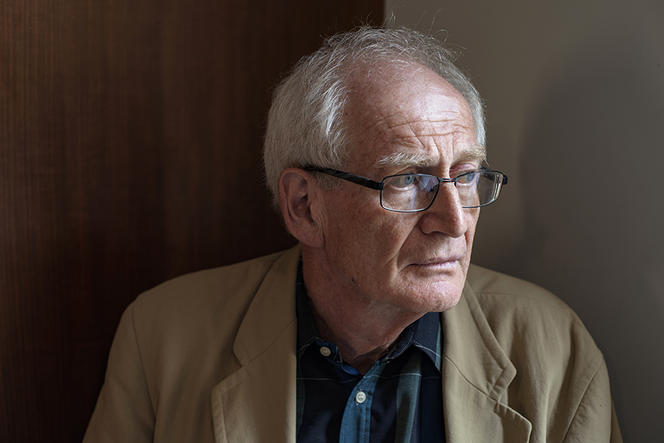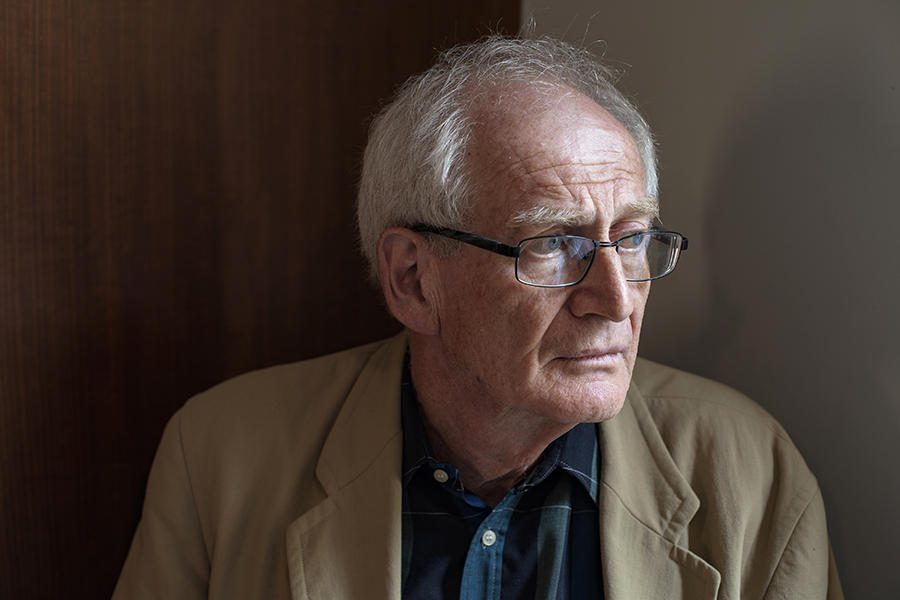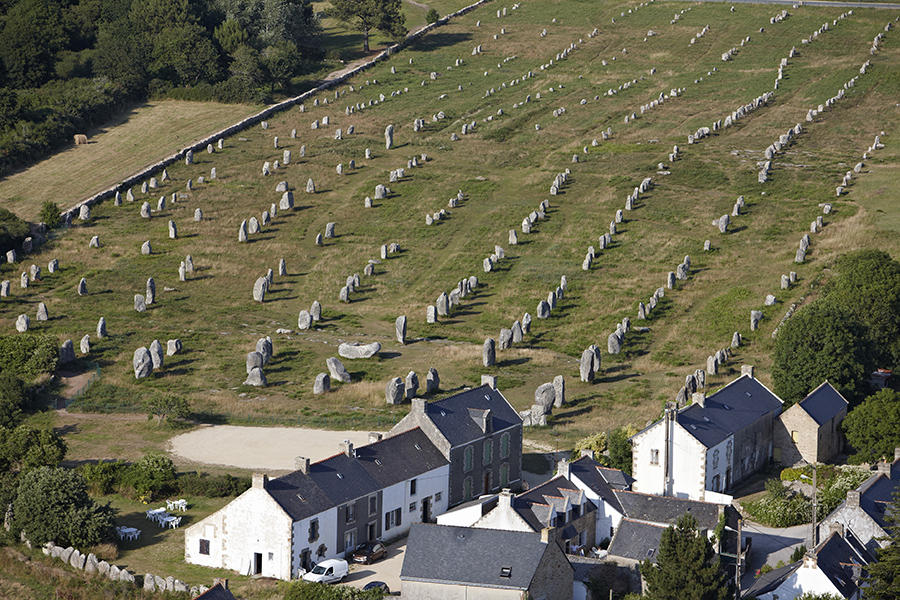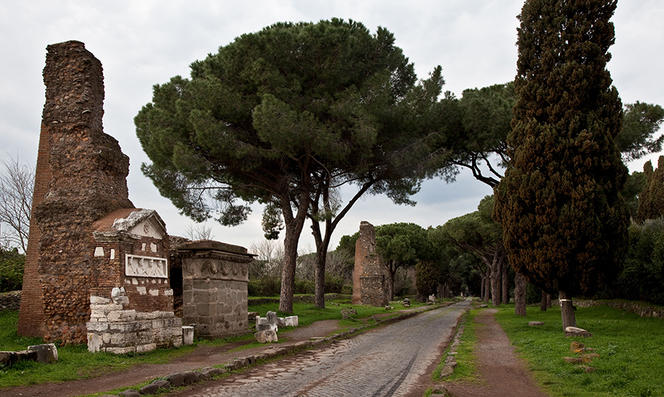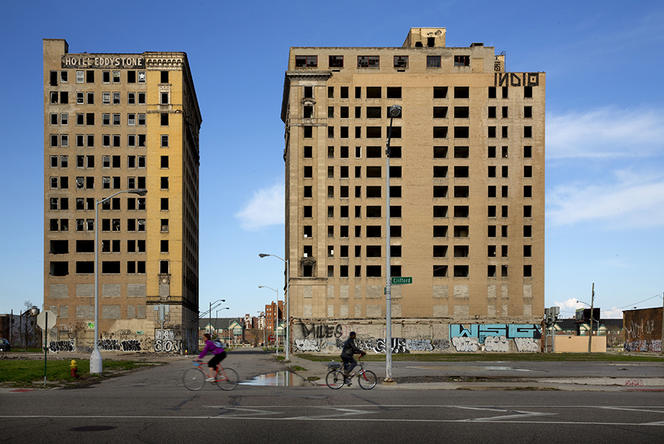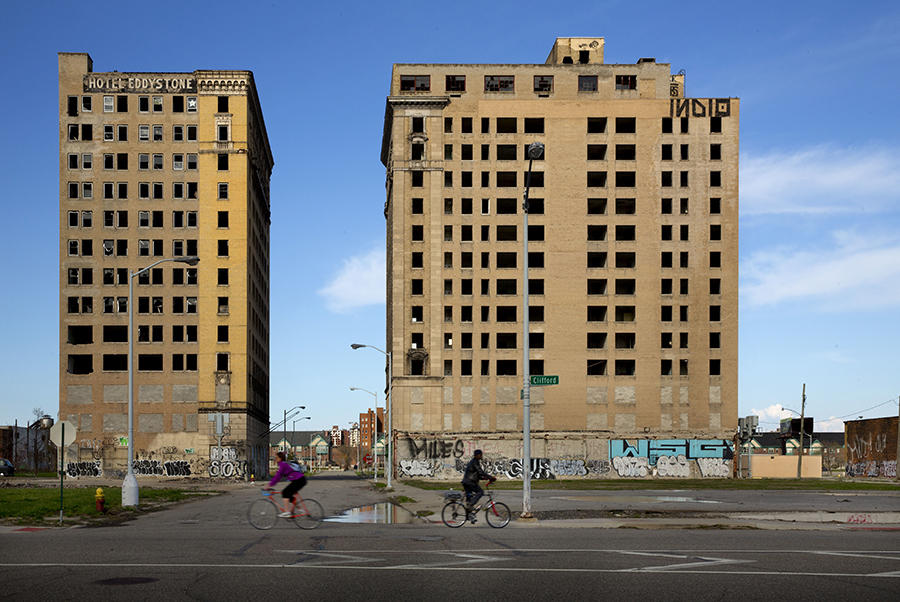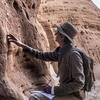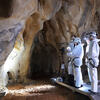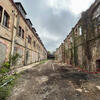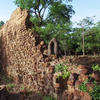You are here
Ruins tell the tale of human societies
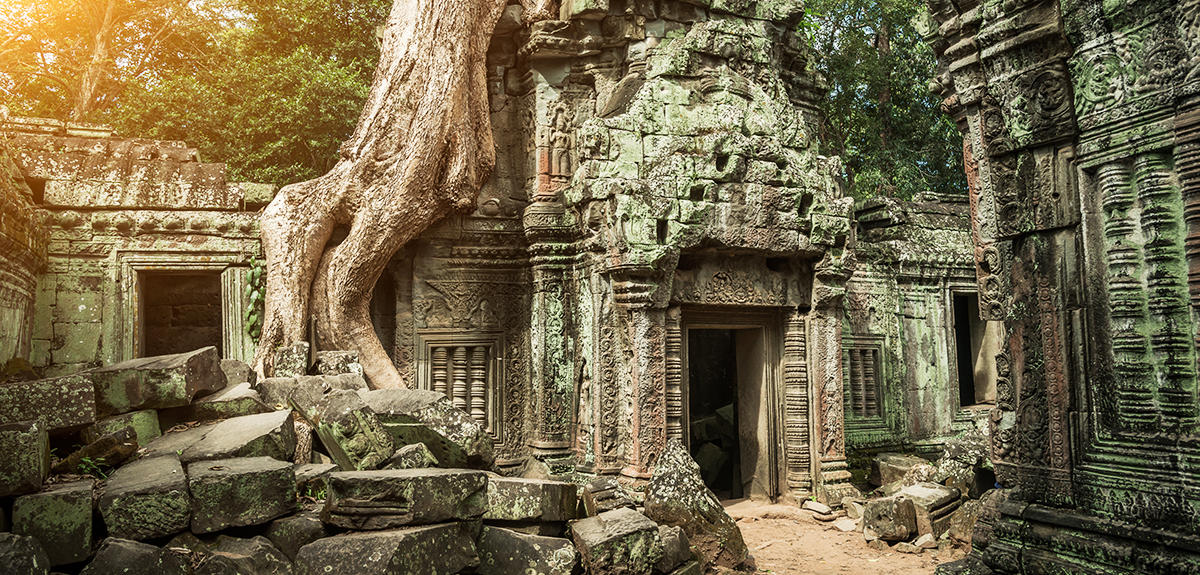
‘Une Histoire Universelle des Ruines’ (A Universal History of Ruins) is not your first essay on archaeology. What is the unifying theme in your research?
Alain Schnapp:1 All of my investigations are linked to one question: what impels people to take an interest in the objects and materiality of the past, a phenomenon that can be observed throughout the entire world and in every period of history? What explains the development of antiquarianism during the Renaissance, and later the Enlightenment, followed by the rise of archaeology in the 20th century? Behind this question looms the whole issue of the human need or curiosity to look back to the past. In the words of the Roman Christian philosopher and theologian Saint Augustine (354-430), one cannot conceive of the present or imagine the future without being aware of the past. This thinking has in a way dominated the epistemology of historical knowledge.
Can this question only be answered by a universalist history?
A. S.: My first historiographical book, ‘The Discovery of the Past’, was devoted to the genesis of awareness of the past among the peoples of antiquity, the Middle Ages and modern times. The considerable amount of material that I had gathered enabled me to embark on this new project starting in 2005. Many books have been dedicated to the ruins of Europe, China and elsewhere, but I wanted to adopt a comparatist approach among different cultures and periods. The basic hypothesis – very much influenced by the thinking of the anthropologist and ethnologist Levi-Strauss (1908-2009) – is that there is something in the ethos of any population that prompts its people to look into the past and make their peace with it. We humans, in all of our diversity across time and space, share a common approach to considering times gone by, involving processes in which social memory plays an essential role, and in which ruins are associated with collective remembrance.
You show that even the most isolated populations cultivate this relation with the past.
A. S.: Yes, it’s the case of populations living in the most remote corners of the Earth, like the Lapps, the Australian Aborigines and hunter-gatherer groups. The latter have virtually no habitat, apart from a few huts, but they possess ritual objects whose transmission from generation to generation link them to the past, as do the messages inscribed on their surface. On the other hand, there is no way for these people to take those objects with them everywhere – a hunter-gatherer has to be on the move, carrying as little as possible. This is why they store them in hiding places, in caves, where they are in a sense archived.
Even in cultures that deny the past, there is a category of thought that transcends this denial. According to certain populations in South Sudan, the ruins dotting the landscape have nothing to do with them, because they were standing there well before their ancestors arrived. This means that even though they do not want to identify with the ruins, they associate them with traces of other previous populations.
There are many traces of the past. Which ones can be considered ruins in your point of view?
A. S.: A ruin is that which is deteriorating, disappearing but still has a discernable form, for example a monument that is collapsing. A ruin encompasses the idea of the passing of time, which breaks down what once was a unit. But for a ruin to exist, there must be people to see it as such. If you are not prepared to observe them, you could think, for example, that the megalithic alignments of Carnac in Brittany (northwestern France) are of geological origin. In addition, it requires the original builder to have had the intention to give it materiality, with greater resistance to time than a mere dwelling. It took several generations to erect Carnac or Stonehenge in the UK. This means that human beings can look ahead to the future, giving those living in the present the means of looking to the past. This dual effort is what makes a ruin possible, as opposed to a remnant, which is just a trace, an imprint, left on a surface by a living being.
Following this reasoning, I have also come to distinguish between convex and concave ruins. Convex ruins are those that form mounds, or tumuli, while concave ruins are marks within the ground. When we try to find traces of Neolithic dwellings in Europe, whose structures were all built of wood and straw, all we can find are fossilised postholes. The purpose of the dig in that case is to find the layer on which the houses were built, carefully expose it and, based on the positions of the postholes in the ground, infer the existence of a construction. Some 16th and 17th century antiquarians proceeded more or less in the same way to make out the inscriptions on the pediments of Roman temples: the letters had disappeared, but the holes drilled to hold them in place outlined their shape. This shape is only a trace, until it is sufficiently legible to make sense – eg. ‘Caesar fecit’ – and hence be considered as a ruin.
You also explain that certain cultures view ruins very differently from the way we do in the West.
A. S.: Unlike in the West, what is most important in Asian societies, especially in China and Japan, is the craftsman and not the work. One fine example is the Ise Grand Shrine in Japan, one of the Shinto religion’s most sacred sites. Starting in the 8th century, to prevent the temple from becoming a ruin, the Japanese have adopted an incredible solution: every 20 years, they build a new replica of the structure and destroy the old one. In the continuity of the cycle, the copy is always the same yet somehow different. There is also the case of China, where monuments are not valued as such: the past is embodied in bronze vases that are handed down from one generation to the next, that people try to preserve and look for in digs.

Even in this day and age, points of view widely differ. For example, some people suggest sending little time capsules into space for the benefit of future civilisations… They may be more or less architectural, but ruins are central to the question of how human beings relate to their past, which reinforces my belief in universality – albeit universality in diversity.
Why then did you end your history of ruins in the 18th century?
A. S.: Precisely because this principle of universality of the human species, invented in the 18th century and championed by Levi-Strauss, is much more common today than it was a century ago, despite all the nationalism we see. The principle of equality of cultures is more or less accepted, and the lowliest of ruins, even a piece of flint or animal droppings indicating a settlement, have as much dignity as the Taj Mahal or Notre-Dame de Paris cathedral.
In my ‘Histoire Universelle’, I focus on Chateaubriand because I think that after the whole comparatist effort that began during the Renaissance and developed in the 18th century, a shared sense of the universality of ruins prevailed as of 1820-30. From then on, the Indians, Chinese, Americans and many others felt free to appropriate the past. That marked the start of a singular history, with singular issues like that of political ruins (for example, what traces remain from the Jewish or Armenian genocides?) or an awareness of the ruin that becomes part of contemporary history, to the point of nearly intersecting with the present. I’m thinking here about all the documents on the traces of large industrial cities like Detroit in the US, or towns devastated by nuclear catastrophes like Chernobyl Ukraine and Fukushima Japan.
What ruins will endure from the 21st century?
A. S.: The remnants of our skyscrapers, our car parks, our motorway junctions and our atomic power plants, as well as those of similar structures like the ‘Très Grande Bibliothèque’ national library in Paris, designed by the architect and urban planner Dominique Perrault… There won’t be any more slowly disintegrating memorial-type monuments, like the remnants of the Soviet Union or East Germany, but rather the ruins of cities struck by economic crises or ecological disasters – a kind of backlash from nature, which threatens Manhattan as much as the forests and cities of Brazil, Australia and California.
What clouds the future of the 21st century is the rubble generated by the unbridled expansion of predatory economies and the wasting of resources. The ruins were the signs of a hope for a peaceful return to nature; the debris is the expression of the irreversible disappearance of beings and things.
Is this new perception of ruins linked to the evolution of archaeology?
A. S.: In fact, the discipline experienced an epistemological leap in the 1830s, leading to the appearance of the term ‘archaeologist’ to replace ‘antiquarian’, used since the 1st century BC. An antiquarian could study any site and have any type of interest in antiquity – whether aesthetic, historical, financial or other… Whereas an archaeologist considers the past, near or distant, as a unit to be studied using three types of techniques – already known to antiquarians, but in combination. The first is typology, in other words cultural variations: a vase produced in southern Gaul does not look exactly like an equivalent produced in northern Gaul. Secondly, different types of objects make it possible to identify the spaces and layers in which they are found, which is what we call stratigraphy. Lastly, the third technique has to do with the history of technology, which makes it possible, for example, to determine that a flint fragment was carved by man and another was not. On the contrary, all the antiquarians could tell about the megaliths of protohistory was that they ‘predated the Romans’.
Can the progress in archaeology in the 20th century be described as revolution?
A. S.: Yes – we have seen extraordinary advances since World War II, first with preventive archaeology, followed in 1949 by the discovery of Carbon 14 dating by the American physicist and chemist Willard Frank Libby (1908-1980). Other physico-chemical developments followed that now enable us to establish absolute chronologies. And in the past 20 years new prospecting techniques using satellites have provided much more detailed images of the Earth than what was previously possible with airplanes.
Lidar remote sensing can even penetrate the vegetation cover. This is how we discovered that the temples of Angkor in Cambodia are surrounded by dwellings. This way, an increasing amount of data is collected upstream, resulting in less and less destructive archaeology in the field. The dig itself becomes more of a verification. The same is true for developments in chemistry, which can be used to identify the liquids that were once stored in vases and amphorae, and in biology, which helps to determine the diets of people from very ancient times.
It’s a far cry from the image of the ‘Indiana Jones’ archaeologist…
A. S.: It is true that the range of scientific resources available today is such that, on a dig, the archaeologist is more like the conductor of an orchestra. When I was starting out in the 1970s, at best we would have an illustrator, two or three students and three dozen workers. Today, an archaeologist on a dig might have 10 or 15 workers at the most, but also a more than 20-strong scientific team! In some universities, there are physicists and chemists who concentrate exclusively on archaeology. In Paris, we also created an environmental post-graduate programme for archaeologists to learn about environmental techniques and for environmental specialists (in human biology, chemistry, etc.) to discover the basics of archaeology, giving them all a common language.
Unfortunately, despite all of this progress, the status of the discipline in society has not improved, and even tends to deteriorate. Wherever societies fall on hard times, their archaeologists disappear. Afghanistan had good professionals, but they have fled the country to escape the war. Some Syrian experts have been assassinated… The archaeological heritage is not only threatened by civil war, but also by antiques smuggling, which is nearly as lucrative as drug trafficking. For many years my colleagues and I have been calling for stronger measures to protect this patrimony, and one of the reasons why I wrote ‘Histoire des Ruines’ was to put forth moral and intellectual arguments in favour of such actions.
Moral arguments?
A. S.: Indeed – by spotlighting the importance of our archaeological heritage and the need to protect it from demographic pressure and short-term economic considerations. In France, we have been effectively preserving our printed heritage for centuries. For archaeology we had to wait until 2001, with the founding of the National Institute for Preventive Archaeological Research (INRAP), to take a real interest at last in our national patrimony. Why this predominance of written over material memory? In 20 years, the data collected by the INRAP has increased 50-fold, or even 100-fold. Yet it remains to be published! And the ever-dwindling number of researchers means we can’t use all of this information and make it available to the public.
The popular outcry for the restoration of Notre-Dame Cathedral must not conceal the fact that upstream the security of our richest, most emblematic monument was not considered a priority. That episode revealed the extent of our political leaders’ lack of concern for the fate of our historical and archaeological heritage. The protection of buried ruins is a never-ending struggle.
- 1. Archaeologist and historian, professor emeritus at Université Paris I – Panthéon-Sorbonne, researcher at the ARSCAN laboratory (CNRS / Université Paris I – Panthéon-Sorbonne / Université Paris Nanterre / Ministry of Culture). In 2000 he founded the National Institute for Art History (INHA), which he headed until 2005.


